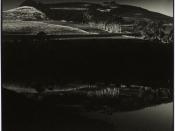Mozart?s Piano Sonata No. 2 (K.280) Mvt. I is a rarity in that it follows almost every rule of sonata-allegro form to a ?T.? I consider this a most striking find, since there really wasn?t anything called sonata-allegro form in the classical era. It just happened to be that music was very set in ratio now that we look back on it. Mozart wrote this piece in 1775 when he was just 19 years old, and it was his second piano sonata (as the title suggests).
The exposition starts out in F Major with a small two measure introduction, followed by Group 1 material. This is important because he uses the 16th note idea later in transitions between groups as well as the development. The first transition uses triplets as a means to modulate to C Major by using secondary dominants. It is also worth noting that the transitions between groups are exceptionally long.
I believe this is to make up for the surprisingly short development section later in the piece. Group 2 comes into view, being in C Major for the rest of the exposition and by expounding on the 16th note idea. The Group 2 motive of quarter note triad followed by 16th note runs come back in the development. The next transition uses triplets again, but in a different fashion. He cuts the first note of every bar in the right hand while the left hand goes chromatically from E to A in place of the cut triplet notes. This small idea comes back briefly in the development. The next section is hard to describe. Some might say it is the closing theme, while others might say it is a precursor to the closing theme. I tend to think the latter. He could have ended it from...


